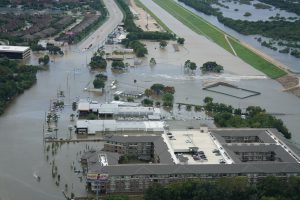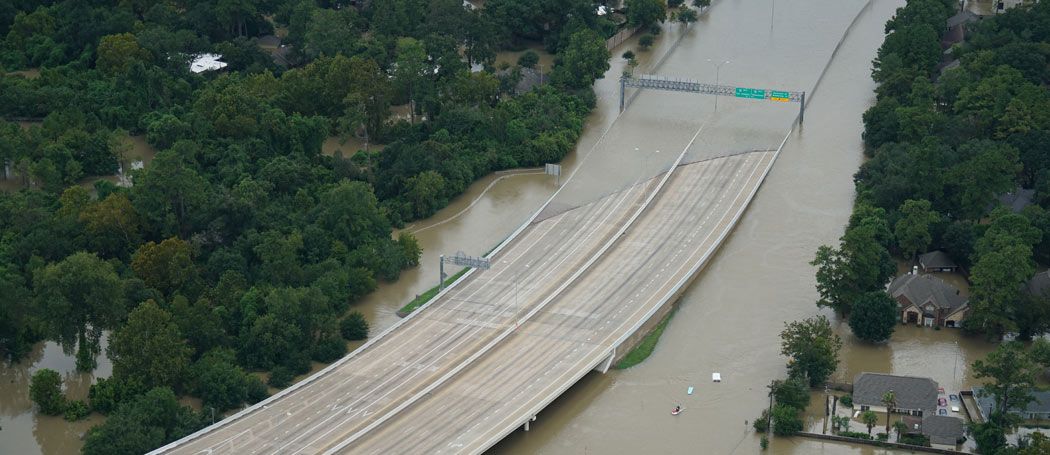Stormwater Spotlight: Eastern Texas, Louisiana and the 100-Year Storms
by Jim Leamy, Senior Manger of Quality Assurance
It has been made dramatically and tragically clear in recent years that our stormwater infrastructure along the Gulf Coast is in need of considerable upgrades. Stormwater control measure (SCM) inspections are becoming more widely accepted for business owners and property managers in eastern Texas and Louisiana as the one-hundred-year flood becomes more frequent. Warm ocean waters are causing disastrous storms that wreak havoc on the area year after year and cause flooding to low-lying counties. With the stormwater systems working to their capacity, the need for the region to re-evaluate the definition of a “common storm” becomes increasingly important. Stakeholders in the region will now have to consider how to best manage and prepare for these storms before they continue to suffer damage to their respective properties and communities.
For cities and states prone to urban sprawl, major flooding is predictable as impervious surfaces grow. Stormwater systems and functioning infrastructure are important to control runoff from these largely developed areas, because surface that was once wetland, swamp, and marsh can no longer infiltrate stormwater. SCM inspections ensure that stormwater assets are functioning properly and that, in the case of unruly weather, stormwater does not remain in the streets for days at a time. You as a business owner are responsible for ensuring that the infrastructure on your property can keep up with the average rainstorm. In eastern Texas and Louisiana, local businesses that do not upgrade their systems will suffer catastrophic, costly damage from flooding on a reoccurring basis as old infrastructure reaches its capacity to store stormwater. This will lead to intense physical, legal, financial, and above all, preventable consequences.
Spotlight on Urban Infrastructure
The demand for grey and green infrastructure is increasing in cities like Houston and New Orleans as the outdated infrastructure is no longer able to compete with the progressing region. Currently the bayous in cities in eastern Texas are intended to handle a 10-year storm, meaning there is a 10% chance that a storm will come within any given year and push the infrastructure to its capacity. Comparatively, many cities are equipped with infrastructure that can manage for a 100-year storm[1]. Alongside those systems, underground pipes, dams and reservoirs are also decades old and unable to keep up with growth. In Houston, the lack of zoning regulations has created larger issues for reoccurring stormwater runoff. Currently any apartment, skyscraper, or townhouse, etc. can be developed in the same area, side by side[2]. This variability in development can make creating a stormwater system difficult, as the runoff coming from a 2,000 square foot house is different than the runoff from a 400,000 square foot shopping mall. Additionally, counties in eastern Texas and Louisiana are susceptible to flooding as many of the counties are built within a floodplain. By improving and maintaining a development plan that involves updating and installing proper stormwater systems the city can continue to grow.

Weathering the Storm
Although the weather is uncontrollable, the real estate development in the region is currently accelerating, and forecasts can be better managed for large storms by property and business owners. Installing SCMs can help areas experiencing a lot of growth prepare for what’s to come. SCMs can be vegetative or engineered structures that can help control stormwater runoff and flooding, as well as improve water quality downstream. This is because these systems can direct the runoff to areas that hold and filter the water until it is ready to go downstream. SCMs that are designed for 100-year storms are more effective because the capacity to hold water is much larger. Stormwater professionals then maintain these systems by providing routine visits to the stormwater assets and make any recommendations needed to upgrade or increase the functionality of the system. Maintenance plans can ensure the longevity of stormwater assets by providing good house-keeping and repairs. Municipalities will perform routine SCM inspections that will ensure that your stormwater systems are functioning as designed. A thorough SCM inspection can become very important in regions like southeast Texas and Louisiana, as property mangers and business owners are experiencing catastrophic flooding on a re-occurring basis.
Eastern Texas has continued to experience the intensity of a 100-year storm year after year. In 2015, Houston underwent a rain event that brought 12 inches of rain in just 10 hours[3]. 2016 brought similar flooding to Houston with 12-16 inches of rainfall in just 12 hours[4]. Hurricane Harvey wreaked havoc in 2017 with nearly 60” of rain in three days, and most recently the Houston area saw the wrath of tropical storm Imelda with over 43.39” of rain. Property managers are struggling because it is becoming increasingly hard to protect their property from such large storms. As these instances become more frequent, the impact of storms in the region will be heavily dependent on modernized infrastructure and follow-up maintenance plans that comply with SCM inspection standards. If your business or municipality has questions regarding the functionality or capability of your stormwater system, give the professionals at AQUALIS a call for a consultation.
[1] Schaper, David. “3 Reasons Houston Was a ‘Sitting Duck’ for Harvey Flooding.” Npr, 31 Aug. 2017, https://www.npr.org/2017/08/31/547575113/three-reasons-houston-was-a-sitting-duck-for-harvey-flooding.
[2]
Gray, Nolan. “How Houston Regulates Land Use.” Market Urbanism, 19 Sept. 2016, https://marketurbanism.com/2016/09/19/how-houston-regulates-land-use/.
[3]
Young, Jessica H. “Remembering Houston’s Memorial Day Floods.” Chron, 25 May 2016, https://www.chron.com/houston/article/Remembering-Houston-s-Memorial-Day-floods-7944644.php.
[4] Barker, Aaron. “Look Back at Houston’s ‘Tax Day Flood.’” Click2Houston, 17 Apr. 2018, https://www.click2houston.com/weather/look-back-at-houston-s-2016-tax-day-flood-.
